It can feel a little overwhelming when your horse is suspected of or has been diagnosed with a metabolic condition, but with good management (lifestyle and dietary) they can continue to live a happy, healthy life. In many cases, these horses are still active and require a balanced concentrate to perform, so we have to take a look at their total diet to be sure they are receiving everything they need to reach their nutrient needs without going overboard in starches and sugars, which is their main sensitivity.
COMMON METABOLIC CHALLENGES.
First of all, what are some of these conditions and what do they mean for your horses’ health? PPID (Cushing’s), insulin resistance (IR), and equine metabolic syndrome (EMS) are three of the most common issues we see requiring low starch diets, each occurring either on their own or alongside each other simultaneously. Not at all confusing, right?
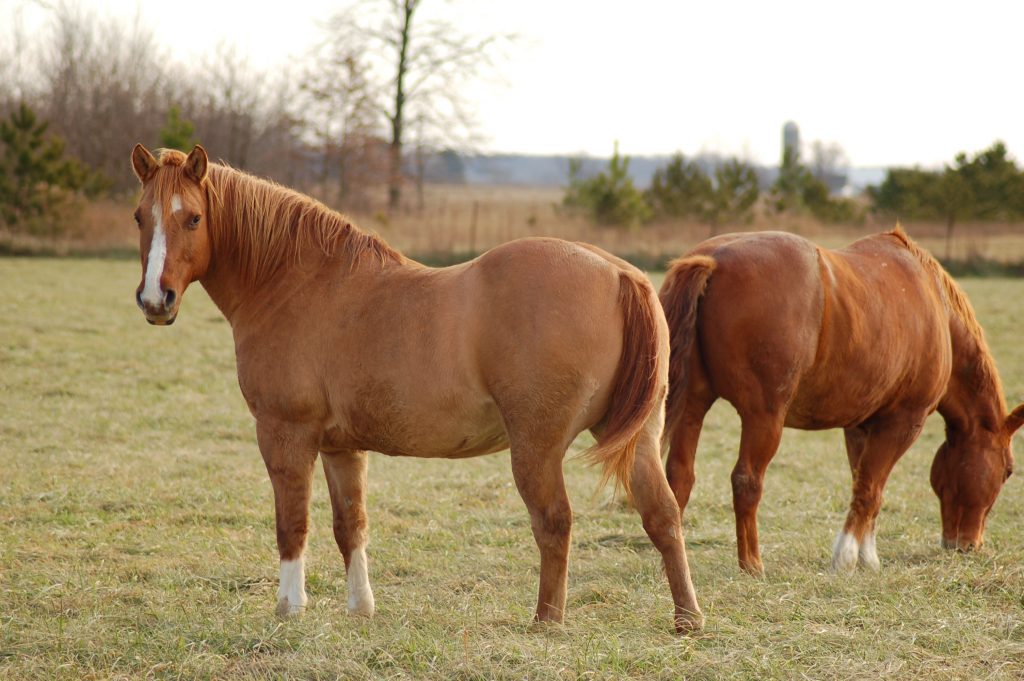
What they have in common is that these conditions affect how a horse’s body handle sugar and hormones, and horses with these issues are at higher risk for laminitis. Here are some key points on each and their relationship:
- IR can be thought of as pre-diabetes in people – the horses’ cells don’t respond well to insulin so the body produces more of it. It is common in easy keepers and is often a part of EMS or PPID (but can happen on it’s own).
- EMS is typical amongst chronic obesity and can be caused by genetics, rich diets and lack of exercise. IR is usually a big part of EMS and can occur in young and middle-aged horses.
- PPID is a hormonal condition affecting horses usually 15 or older, caused by a tumour on the pituitary gland. Again we see an overlap as PPID can cause IR, and PPID makes a horse prone to laminitis.
The bottom line is that all three of these conditions put horses at risk for lamintis, so it is important to manage their health, lifestyle and diet closely based on their new needs.
EVALUATING TOTAL DIETS.

It’s a misconception that just because a horse has a sugar sensitive condition that they have to avoid all “grains”; hay alone does not provide all the nutrients required for horse health, particularly when active. The term “grain” itself is misleading as most commercial feeds today are pelleted feeds versus whole grains like we think of as a typical sweet feed of yesteryears. Pellets allow the high NSC component of the grain to be removed, leaving the high fibre byproducts as the nutrition.
How much you feed, it’s contribution to NSC in the total diet, and how frequently you feed all make a difference to the metabolic horse. And it’s not all about percentage, it’s the amount in the total diet that we are looking at, which should typically be below 2lbs per day.
*Remember that forage is the largest component of the diet*
Reducing sugars in their forage has a much larger impact on the lbs per day of NSC intake. If low sugar hay is unavailable to you, soaking hay for 30-60 minutes can reduce sugars by ~3%.
For example, if we reduce the NSC on a concentrate by 3%, the total diet reduction would be around 0.1lbs per day. However, if we reduce the NSC on a hay by 3% from soaking or otherwise sourcing more mature hay cuts, the total diet reduction in NSC would be 0.5lbs or more.
Another consideration is the frequency of meals – spreading out meals is best practice for all horses, but particularly those with metabolic challenges to keep their sugar intakes steady overall.
KEY CONSIDERATIONS.

Prevention is key – too many calories and not enough exercise is a recipe for some metabolic conditions. Keeping your horse at a healthy weight and turning them out regularly is critical and can go a long way in reducing their risk of developing these conditions down the line and can also vastly help with managing them once diagnosed.
Feed forages appropriate to their lifestyle and needs – as the bulk of the equine diet, it is important to feed a quality of hay that matches their ability to use the calories. It is much easier to balance up the ration with a mineral or a concentrate on a more mature hay than it is to try to burn excess calories. If not available, soaking to reduce it’s NSC contribution to the diet may be necessary on horses at risk.
Metabolic horses need a low starch diet, not a no-starch diet – the urge to remove all concentrates can leave a horse with holes in it’s overall nutrition. Working with equine specialists can help ensure your horse reduces it’s risk of health issues due to it’s condition, while also still receiving all the nutrients required to thrive.
Masterfeeds prides itself on staying informed about what research is saying, what the equine population trends are and responding with quality formulations and diets for all horses and life stages. Our line of low NSC feeds has a proven track record of keeping our special needs equine friends happy and healthy well into their golden years. Check them out, below!
For more information or help feeding the metabolic horse, or to schedule an on-farm consultation from one of our reps, visit our website, contact us, or email us directly at: happyhorses@masterfeeds.com
Product Spotlight
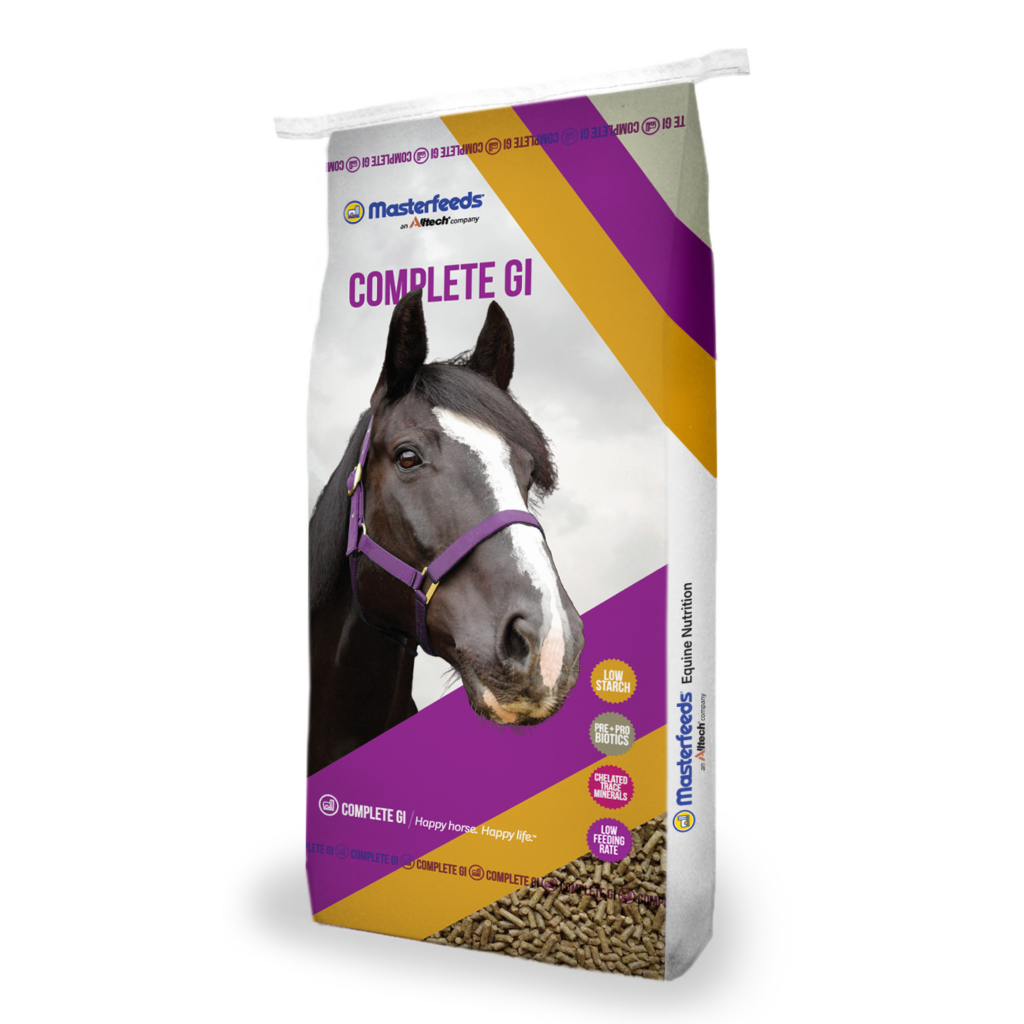

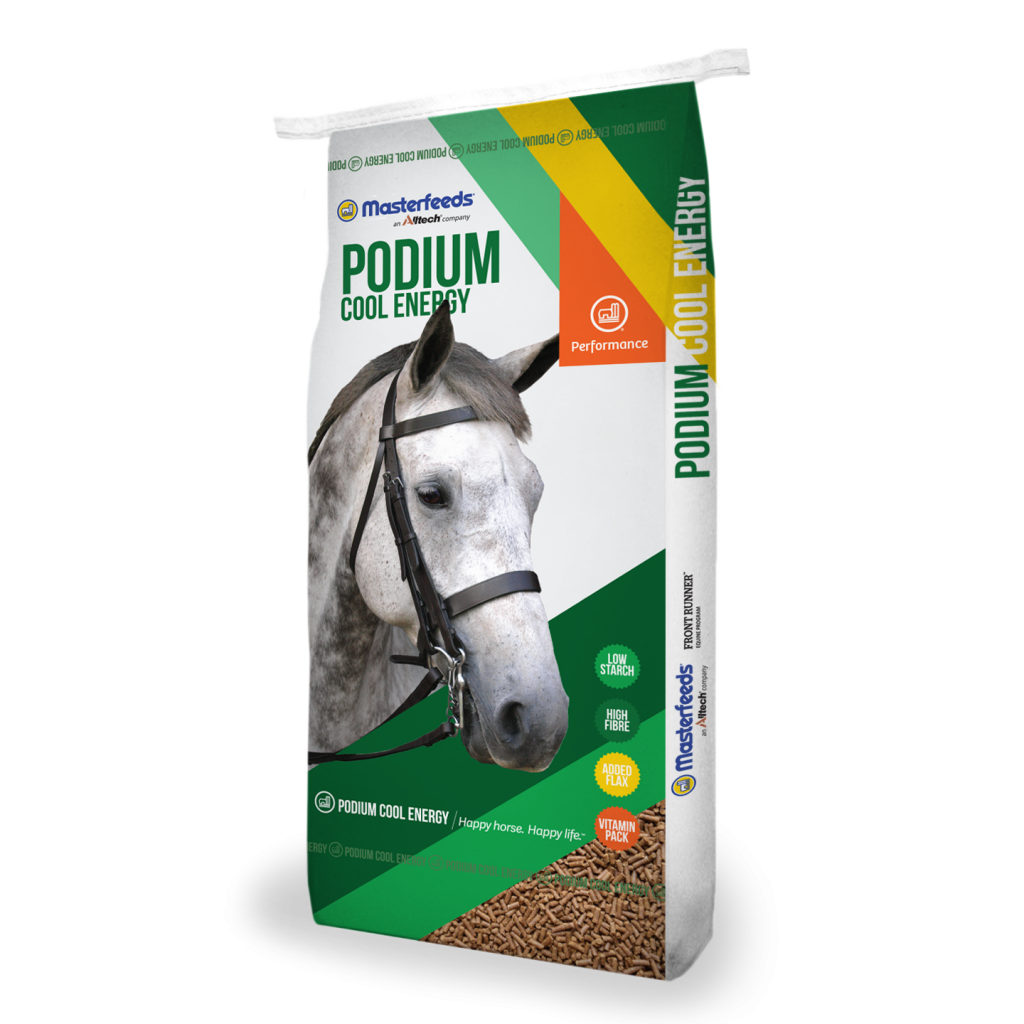
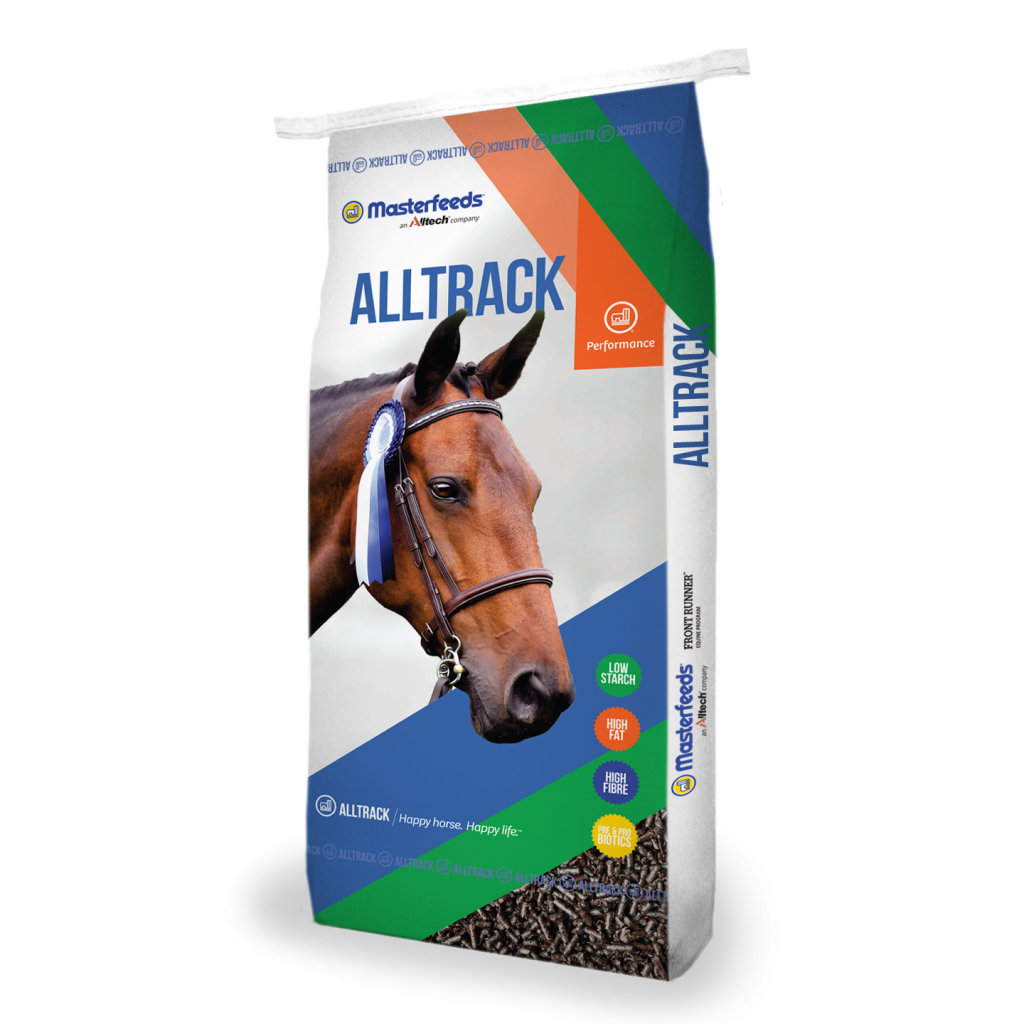
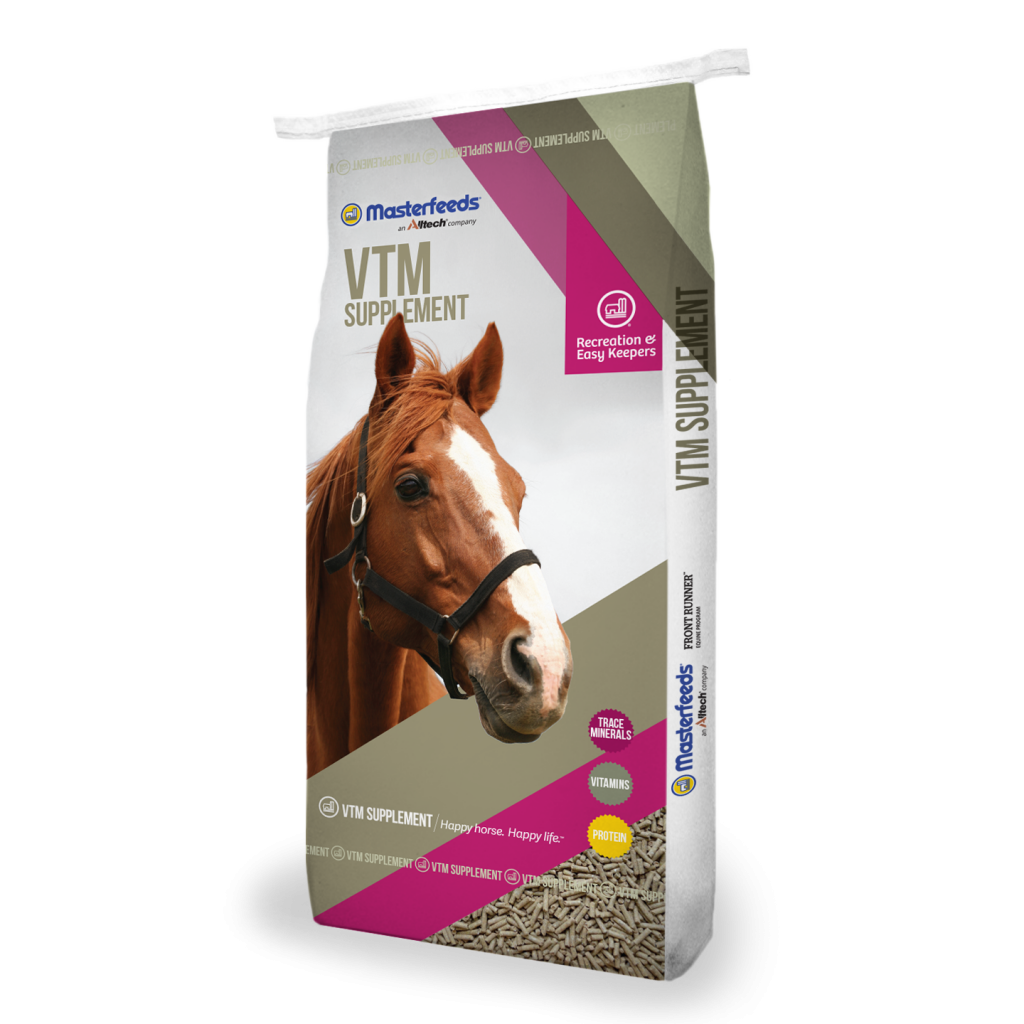
Related Posts
- Two Ends of the Spectrum: Feeding the Under or Over Weight Horse
- Preventing and Treating Colic
- Gastric Ulcers and Tying Up
- Guide to Deworming Your Horse
- Tips to Minimize Parasites on the Farm
- Hay Shortages and Quality Issues: Finding Fibre Alternatives and Balancing Rations
- Considering Calories: Weight Loss Causes and Solutions
- Nutrition Solutions: Feeding for Optimal Body Condition
- Special Needs Nutrition: Creating a Feed for the Metabolic Horse
 POSSIBLE CANADA POST DISRUPTION
POSSIBLE CANADA POST DISRUPTION